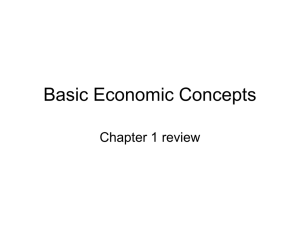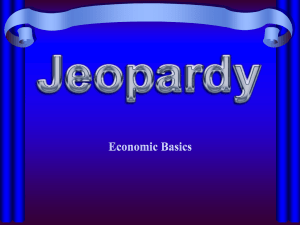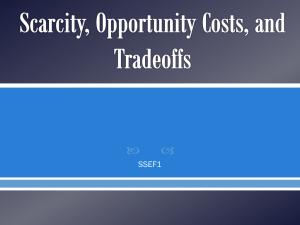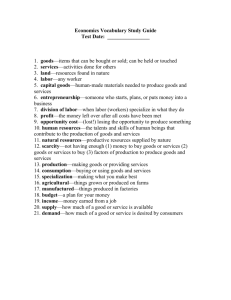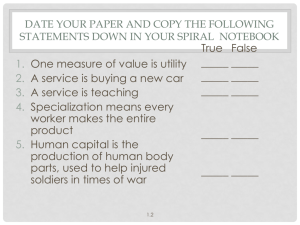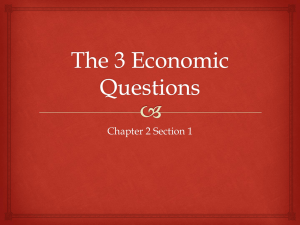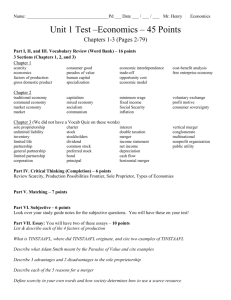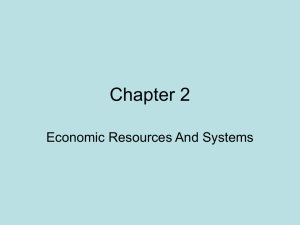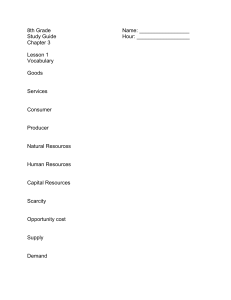Name
advertisement
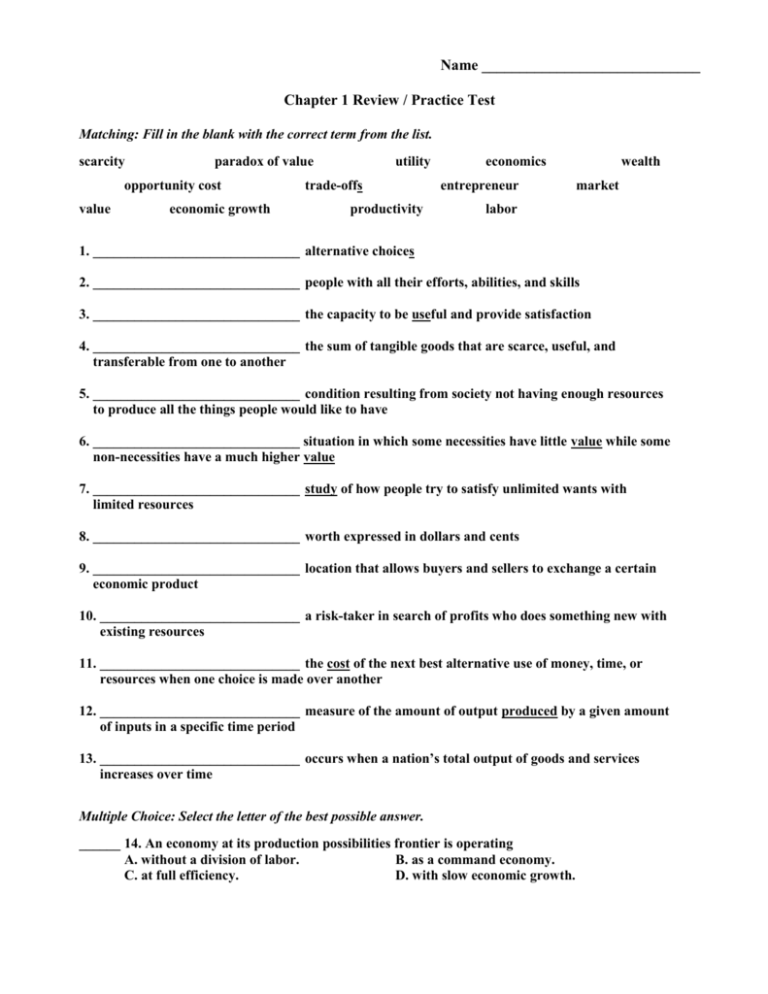
Name _____________________________ Chapter 1 Review / Practice Test Matching: Fill in the blank with the correct term from the list. scarcity paradox of value opportunity cost value economic growth utility trade-offs productivity economics entrepreneur wealth market labor 1. ______________________________ alternative choices 2. ______________________________ people with all their efforts, abilities, and skills 3. ______________________________ the capacity to be useful and provide satisfaction 4. ______________________________ the sum of tangible goods that are scarce, useful, and transferable from one to another 5. ______________________________ condition resulting from society not having enough resources to produce all the things people would like to have 6. ______________________________ situation in which some necessities have little value while some non-necessities have a much higher value 7. ______________________________ study of how people try to satisfy unlimited wants with limited resources 8. ______________________________ worth expressed in dollars and cents 9. ______________________________ location that allows buyers and sellers to exchange a certain economic product 10. _____________________________ a risk-taker in search of profits who does something new with existing resources 11. _____________________________ the cost of the next best alternative use of money, time, or resources when one choice is made over another 12. _____________________________ measure of the amount of output produced by a given amount of inputs in a specific time period 13. _____________________________ occurs when a nation’s total output of goods and services increases over time Multiple Choice: Select the letter of the best possible answer. ______ 14. An economy at its production possibilities frontier is operating A. without a division of labor. B. as a command economy. C. at full efficiency. D. with slow economic growth. ______ 15. What is the fundamental economic problem? A. entrepreneurship B. scarcity C. land D. opportunity cost ______ 16. A good is classified as durable if it lasts more than A. 3 years. B. 1 year. C. 6 months. D. 1 month. ______ 17. Manufactured goods needed to produce other goods and services are known as A. nondurable goods. B. consumer goods. C. gross domestic products. D. capital goods. ______ 18. Which of the following is NOT an example of a capital good? A. a crane at a construction site B. a pair of Nike shoes for sale at Foot Locker C. a stove at a restaurant D. a copy machine in an office ______ 19. The situation in which some necessities have little value while some non-necessities have a much higher value is known as A. production possibilities frontier. B. entrepreneurship. C. paradox of value. D. scarcity. ______ 20. The study of economics helps people to A. better understand the free-enterprise system and capitalism. B. make wise choices when voting for political candidates. C. become better decision-makers. D. all of the above. Short Answer: Answer the following in the space provided. 21. List the 3 basic questions every society must answer. 22. List the 4 factors of production. 23. List 3 examples of durable goods. 24. List 3 examples of nondurable goods. 25. What does TINSTAAFL stand for?
